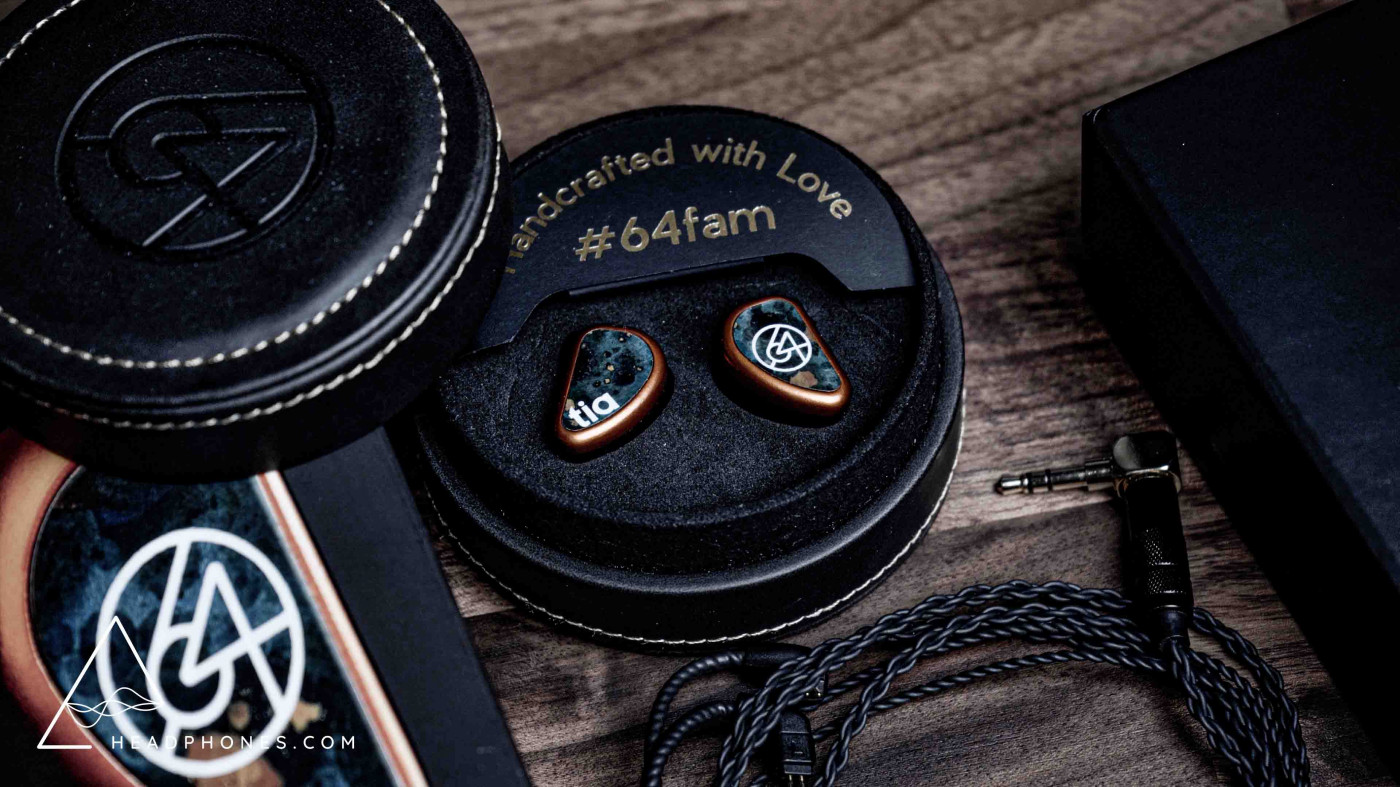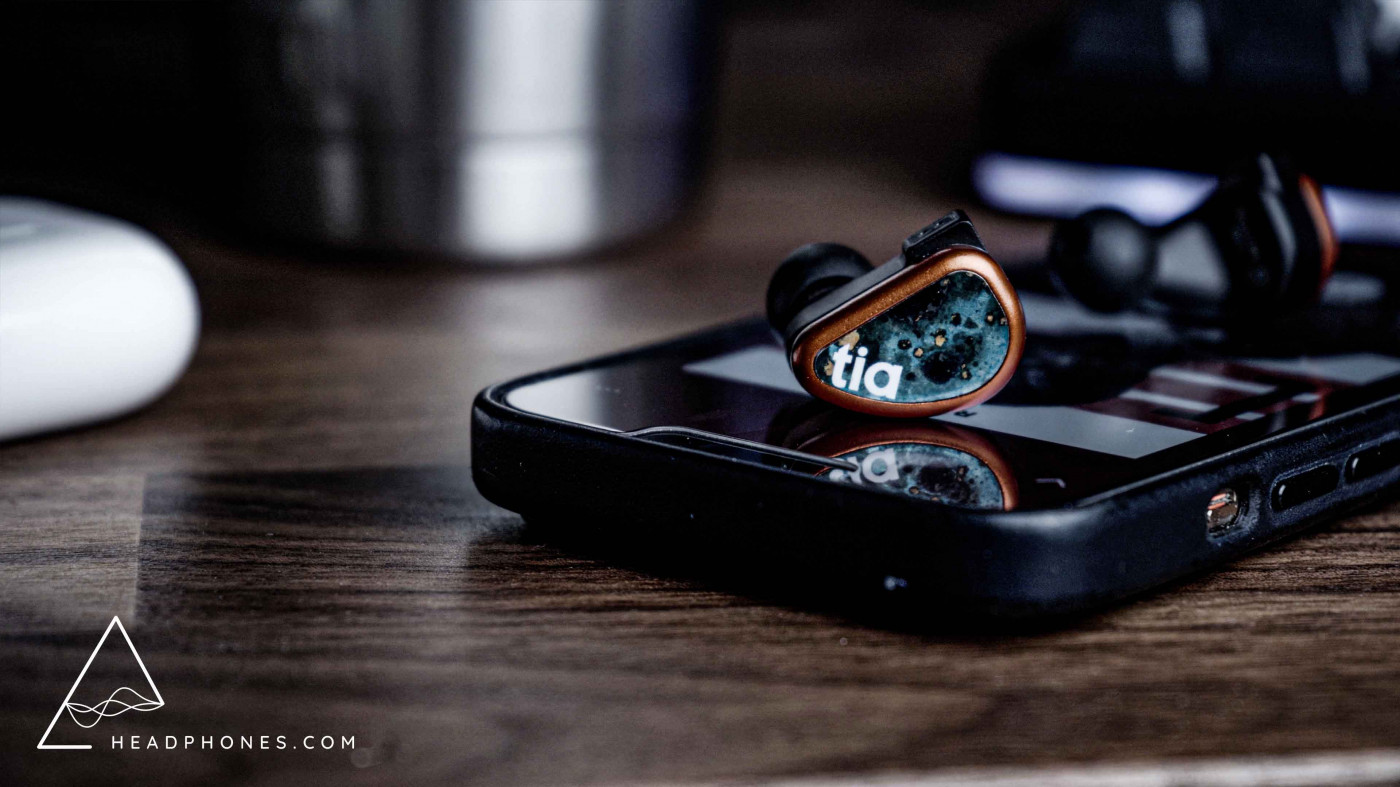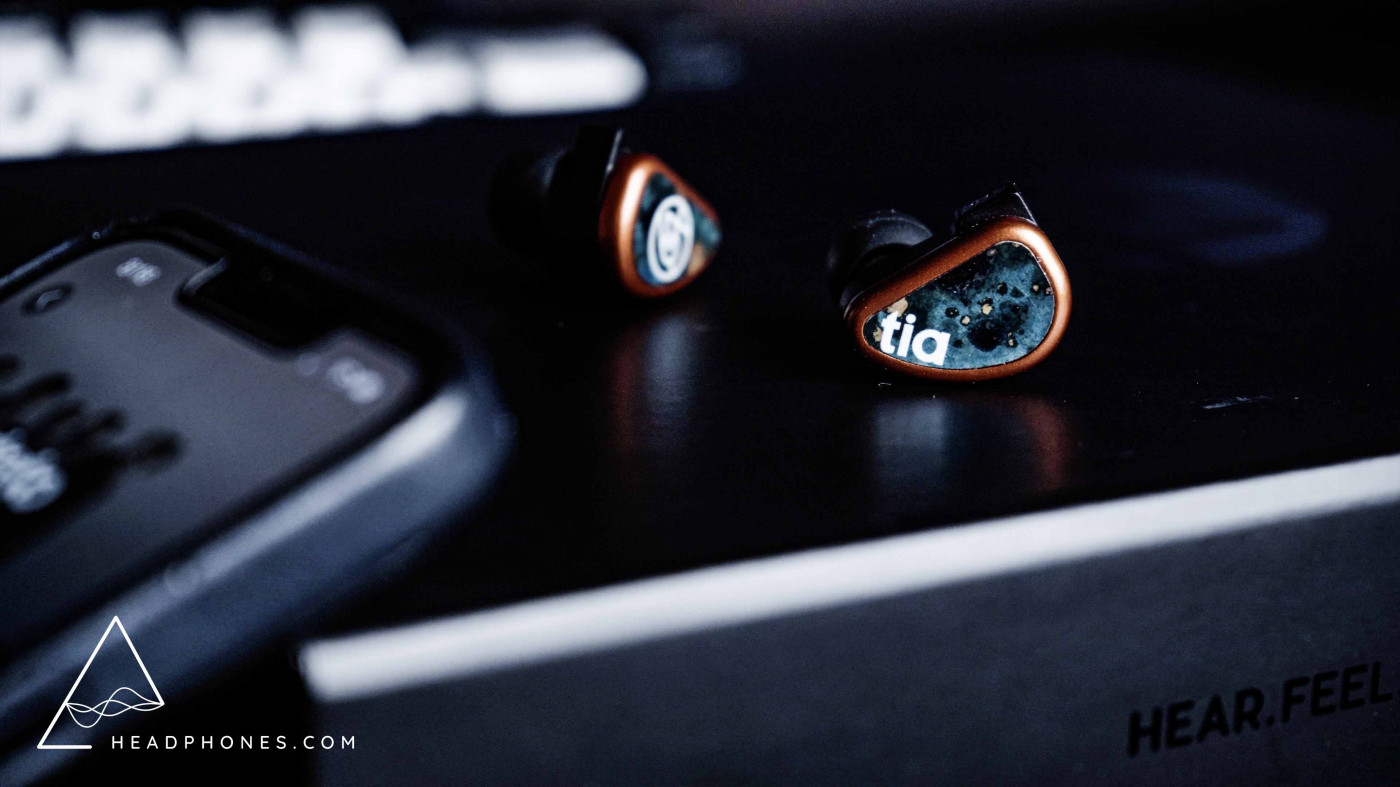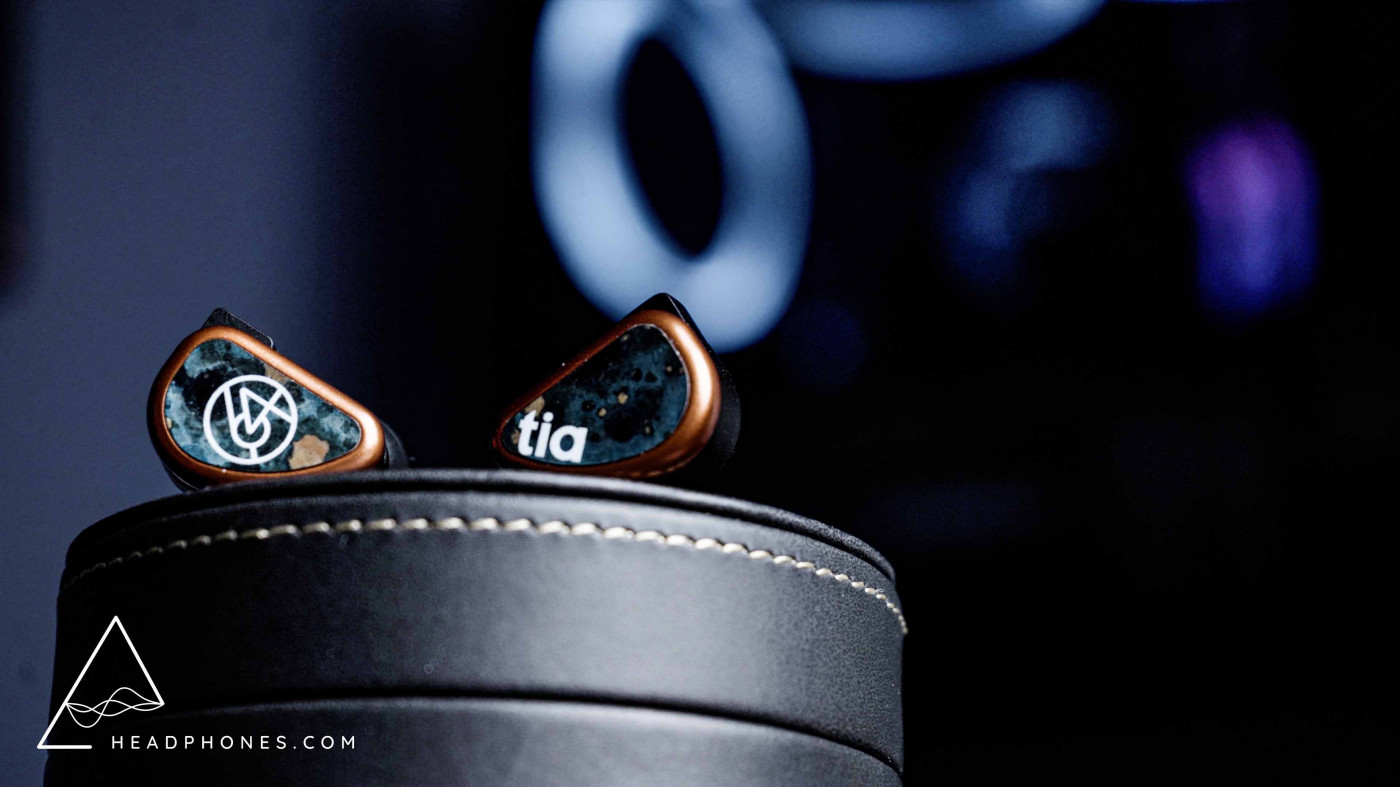64 Audio tia Fourté Review - I Wanted to Love These

64 Audio tia Fourté Review
Written by Chrono
Introduction
The 64 Audio tia Fourté, which retails at a jaw-dropping $3,599, is using one of the more simple hybrid systems in the high-end, being powered by three balanced-armature drivers, and one dynamic driver. However, don't let the relatively-low driver count fool you, as the Fourté has stood as 64 Audio's flagship for nearly six years and to this day remains a performance benchmark for IEMs.
In this article I'll be sharing my listening experience with the Fourté, which I've really been looking forward to trying out since it's my first exposure to 64 Audio's IEMs. Additionally, since I recently had the opportunity to listen to the excellent Empire Ears Legend Evo, I'm also rather curious to see how these two flagships from leading IEM designers compare.
64 Audio Tia Fourté - Product Summary
- Reasons to buy
- Very Comfortable, Small Shell
- Excellent Soundstage, Imaging and Layering
- Great Detail Retrieval
- Reasons not to buy
- Stock Tonality is Poor
- Use of EQ is Highly Encouraged
- Prohibitively Expensive
 |
Get the 64 Audio Tia Fourte for the best available price at headphones.com. |
Discuss the 64 Audio Tia Fourte on the HEADPHONE Community Forum |
Sources and Music Used in Listening Tests
All the listening for this review was done on the Astell & Kern SR25 , and the Astell & Kern Kann Alpha . For the listening tests I used music from a wide variety of genres including Rock, Jazz, Classical, Acoustic, Hip-Hop, and latin. I played tracks from my own FLAC library, as well as from Qobuz and Tidal via Roon when using the Kann Alpha in DAC mode.
Accessories
In the box, alongside the Fourté, you'll be receiving a 4ft cable with a 3.5mm termination, three sets of silicone tips (S/M/L), three sets of TrueFidelity foam tips (S/M/L), and 64 Audio's premium leather case which--though portable--is not particularly pocketable.

Build and Comfort
Thanks to the use of aluminum, the Fourté's chassis feels both very durable and lightweight. When you combine that with the small size and comfortable shape that the Fourté's shell has, it makes for what is easily my favorite IEM design yet--extremely comfortable and very sturdy.
Personally, one of my biggest challenges with IEMs has always been comfort, and with a lot of IEMs being on the larger size, I struggle to wear most of them for more than twenty to thirty minutes at a time. That was not at all the case, though, with the 64 Audio Fourté in my experience, which I could easily wear in nearly-day-long listening sessions with minimal fatigue. While the larger shell size of other IEMs might not be a problem for a lot of users, I did want to point out that I certainly appreciate designs like these which also seem to factor in ergonomics more deeply. Sincerely, I think that the last time I wore a comfortable IEM it might have been the Sennheiser IE900, so in this regard, trying out the Fourté was refreshing.
Sound
As I mentioned earlier, the Fourté is using a rather simple hybrid setup that is paired up with 64 Audio's tia design methodology. The "tia" system, or Tubeless In-Ear Audio design, is centered around three key elements: open balanced armature drivers, a single bore design, and acoustic chambers. The result of this combination is an IEM of which drivers can radiate into the bore without any obstructions by reducing resonances and distortion.
First Impressions
The result? Yeah, the Fourté delivers truly excellent performance that is worthy of the flagship title, and once again, like the Legend Evo, it challenges my ideas of what can be achieved in an IEM. Unfortunately, though, while the Fourté's performance is fantastic, its tonality... not so much.
I'd describe the Fourté's tuning as being somewhat V-shaped, although I feel like that's not quite accurate. The bass response doesn't actually feel boosted to me over the lower mids, and it does seem to be fairly leveled with the quirky treble region. The problem lies, really, in the upper midrange, which seems to have been completely removed from the equation.

Bass
The bass shelf on the Fourté for my tastes and preferences is set at just the right level where you get a satisfying presence that isn't overbearing. I will note, however, that I felt as though the bass felt a tiny bit warmer than what I'd consider to be neutral-sounding because the bass shelf settles a little late, more towards the midbass.
Normally I'd expect a bass shelf to focus mainly on the sub-bass region of a headphone's frequency response (under 100hz), but here the bass shelf seems to extend a little higher than that, to around 160-180hz. In my listening experience this had an effect that was similar to when headphones have a midbass bump, albeit more subtle. So if you like warmer, and more full-sounding bass responses then the way the low tones are reproduced on the Fourté might be to your liking. I didn't find it to be quite as precise or as impactful as the bass I experienced on the Legend Evo, but I'd still say that the bass on the Fourté is quite nimble, and the use of a dynamic driver also helps it provide a bit of kick behind low tones.
Mids
The midrange is where the Fourté's problems really begin, and that is because even though the lower mids are rich and full-bodied, the upper midrange has some unevenness and is completely veiled. The region between 1-4.5K is recessed by about three to four dB, with additional dips at around 2K and 4.5K.
The lack of presence in the midrange, then, made for really unnatural-sounding vocal and instrument lines which lacked a lot of the contouring overtones that are in that region of the frequency response. The only way I can really describe this IEM's midrange timbre is by comparing it to the kind of tuning you got on some of the older Audeze's (like the 2020 LCD-2) or, for some visualization, like someone placed a blanket over the driver--it was very dark and muffled-sounding, with a bit boxiness that was caused by a 700hz bump that preceded the upper-midrange recession.
I understand that the Fourté is not meant to be a reference-listening IEM, and is more for just musical enjoyment, but I feel like this midrange tuning drains quite a bit of life out of a lot of my favorite recordings. Vocals on the Fourté to me sounded quite dull and swollen, while things like instruments on some of my favorite records like Jazz at the Pawn Shop lacked so much of their characteristic bite that it just let them fade into the mix.
Highs
Unfortunately, though, the midrange isn't where the Fourté's problems really ended for me.
As the Fourté transitions into the lower treble, it has a very significant peak at 5K that introduced noticeable glare, a bit of sibilance, and also added a slight tinniness to the IEM's sound signature. This was followed by another peak at around 8.5K, which although not as aggressive as on something like a DT 990 Pro, it definitely added a bit of sizzle to the mix, and it put a stress on consonants--so more sibilance.
Now, these peaks are noticeable, but I feel like they're really made out to be a lot more prominent because they follow the recession in the upper mids. Nonetheless, in my listening experience this made for awkwardly-brightened overtones since there was almost no contouring from the upper midrange, and it was instead done by the lower treble.
Love our in-depth reviews?
We test and review hundreds of headphones every year. Sign up to get the latest news, reviews, guides, and more in your inbox. Join the 60,000+ like-minded audio lovers who love our newsletter!
Resolution
Now that tonality is out of the way, I get to talk about the Fourté's technical performance, and in this regard, it certainly delivers. The stock tuning may hold it back quite a bit, but for detail retrieval and internal resolution the Fourté is easily one of the most resolving IEM's I've listened to, right alongside the Legend Evo. It was adept at surfacing all the intricate vocal and instrument tones, conveying an astonishingly clean image of the music.

Soundstage, Imaging, and Layering
When it comes soundstage, the Fourté is easily in a class of its own for what I've heard in IEMs, and you could even say that it's its forte... <drops mic>
Terrible puns aside, though, the Fourté's soundstage is sincerely impressive and feels way more open and expansive than I thought I'd experience in an IEM. I found Legend Evo's soundstage to be impressive, but thiis takes it a step beyond, in my opinion challenging what some over ears, like the AEON 2 Noire, or AKG K371 can achieve for staging. This is paired with extremely precise imaging that easily delineated the positioning and directionality of sound, making them surprisingly a great set of IEMs to game in.
I also wanted to note that while instrument separation wasn't immediately impressive due to the Fourté's stock tuning, after using EQ its layering capabilities became significantly more apparent, and really allowed the IEM to show how well it can space out and distinguish each individual track in a mix, further contributing to the Fourté's sense of clarity and resolution.
EQ
Well this is a first for me.
In the past, I had neglected trying out EQ with IEMs because if, I'm being honest, I always saw the primary use case for IEMs being on-the-go-listening or for traveling. However, tuning aside, there were so many things about the Fourté that compelled me to make an EQ for it and not settle for the stock tonality. It delivered the technical performance that I desired from a high-end set of headphones, but it also had the level of comfort that I seemed to find lacking in so many other IEMs I've tried. So as a personal test of sorts, I wanted to see how far I could push the Fourté with EQ, and well it took quite a bit of tinkering, but I was able to get a tonality out of the Fourté that I was quite happy with--happy enough to where if I were to replace my over-ear daily drivers with an IEM, it would be this one.
If you have a Fourté and are interested in trying out the profile I made its EQ, these are the filters I used:
- Low Shelf at 75hz, +5dB Q of 0.7
- Low Shelf at 700hz, -5dB Q of 0.7
- Peak at 1500hz, +3dB Q of 1.41
- Peak at 2500hz, -3dB Q of 2
- Peak at 5000hz, -5dB Q of 4
- Peak at 4500hz, -5dB Q of 5
- High Shelf at 11000hz, -3dB Q of 0.7

Conclusion
To some extent I feel like what I talked about in the previous EQ section should be a part of the summary to this review. I think that it reflects the personal experience, or rather my approach to the Fourté, with that being that I think that it's an awesome IEM in terms of its performance, and since it takes well to EQ, it is able to satisfy pretty much everything on my IEM checklist if I were to buy an IEM for daily use at my desk while working, gaming, etc. That being said, though, despite the performance that it offers, and the comfort advantages that I think it has over other IEMs, I simply can't recommend it at its $3,599 price point.
While tuning preferences are very subjective, I still feel like the stock tonality of the Fourté is not a very good one, nor is it one that I think that a majority of listeners would enjoy; I also have to consider that not everyone is comfortable with EQ, nor is a full parametric EQ as accessible as one would think (Equalizer APO and the one in Roon are the only ones I've reliably used). This was an IEM that I really wanted to love, but ultimately I feel like there are much safer options out there that could deliver similar performance, but with better a tuning, and at a less wallet-murdering price-point.
- Chrono
---
Buy the 64 Audio Tia Fourté for the best available price.
Discuss the 64 Audio Tia Fourté on the HEADPHONE Community Forum Here.
---
